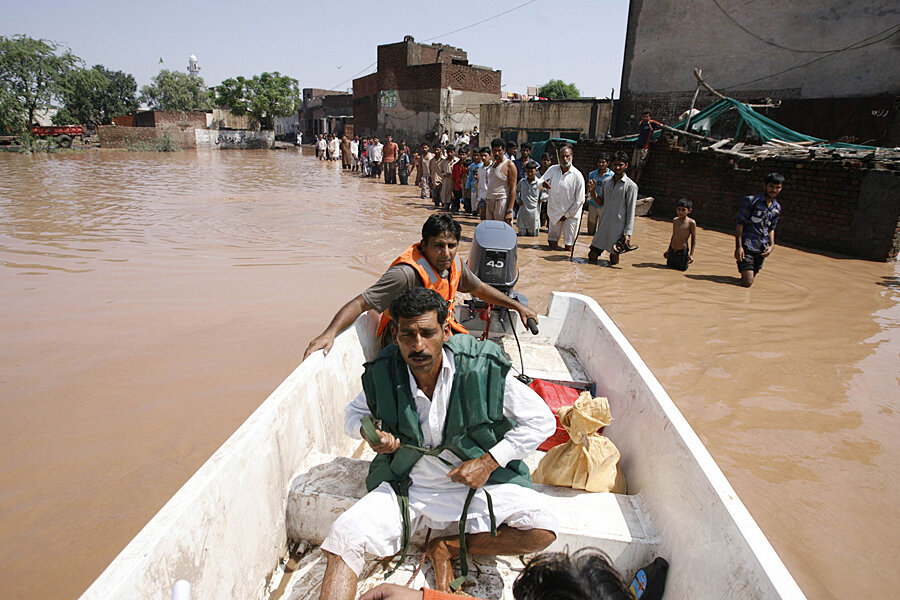Flood leaves thousands stranded in Kashmir
Loading...
| NEW DELHI
Rescue workers in boats and helicopters worked to save thousands of people trapped in homes and on rooftops Monday after floods and landslides killed more than 320 people in the Himalayan region of Kashmir and eastern Pakistan.
Six days of torrential rains have soaked both sides of the divided territory of Kashmir, which India and Pakistan each claim.
A senior Indian army official said the Kashmir valley is facing critical danger.
"Our focus remains to rescue people who are stranded in their houses, and provide them some basic necessities," said Lt. Gen. D.S. Hooda.
Although the rain has stopped, thousands of people were in peril in both countries.
In the Indian-controlled portion of Kashmir, which suffered its worst flooding in five decades, the force of the water snapped electric pylons and disrupted mobile telephone and landline networks, leaving many in the dark with no means of communication.
And in northern and eastern Pakistan, including the Pakistan-controlled part of Kashmir, soldiers were helping civilian authorities with rescue operations.
More than 120 people have died in India, authorities said. Pakistan's National Disaster Management Authority spokesman Ahmad Kamal said the death toll there had reached 205 people — 131 people in the Punjab district and 74 in the Kashmir and Gilgit areas.
Pakistani authorities were preparing for worsening conditions as water levels in the Chenab and Indus rivers were rising, Kamal said.
Farmer Abid Hussain, who was among those rescued by helicopter to Pindi Bhattian town, said he could not save anything from the raging waters that swept through his home.
"We were at home when suddenly someone shouted: 'Water has come'," Hussain told reporters in Pindi Bhattian, 265 kilometers (165 miles) southeast of Islamabad.
"We could not take anything but rushed toward the mosque for safety. Soon we had to climb to the rooftop as water submerged the ground floor. We had been on the roof for two days until the helicopter rescued us and brought us here," Hussain said.
"Everything has been washed away or destroyed in this flood," he said.
Flood waters had entered homes and submerged many of them in Bagh Unna area where Hussain lived. Hundreds of residents of the town had been taken to safer places by helicopter.
At least two air force helicopters made repeated sorties through the day rescuing people stranded on their rooftops and taking them to safer areas along a highway on higher ground.
The Kashmir region in the northern Himalayas is divided between India and Pakistan and claimed by both. Two of the three wars the countries have fought since their independence from Britain in 1947 have been over control of Kashmir.
The countries' leaders kept tensions low in the wake of the floods.
On Sunday, Indian Prime Minister Narendra Modi sent a letter to his Pakistani counterpart, Nawaz Sharif, offering India's help in relief efforts to the Pakistan-controlled portion of Kashmir. Sharif issued a statement of his own, saying Pakistan is "ready to help in whatever way possible" in Indian-controlled Kashmir.
But given military tensions, it is unlikely either side will take up the offers.
Modi called the flooding a "national disaster" and promised the state an additional 10 billion rupees (nearly $170 million) for aid and compensation for those hit by the floods.
In India's portion of Kashmir, more than 5,200 people have been rescued, said O.P. Singh, director of India's National Disaster Response Force.
Blankets, medicine and food were being supplied to people stranded on rooftops, he said, as most parts of Srinagar, the region's main city, were submerged.
At least 450 villages in Indian Kashmir have been submerged and 2,000 others have been affected by the floodwaters, officials said. All schools, colleges and offices have been shut, and electricity and drinking water supplies have been limited.
___
Associated Press writer Asif Shahzad and Zarrar Khan in Islamabad contributed to this report.







